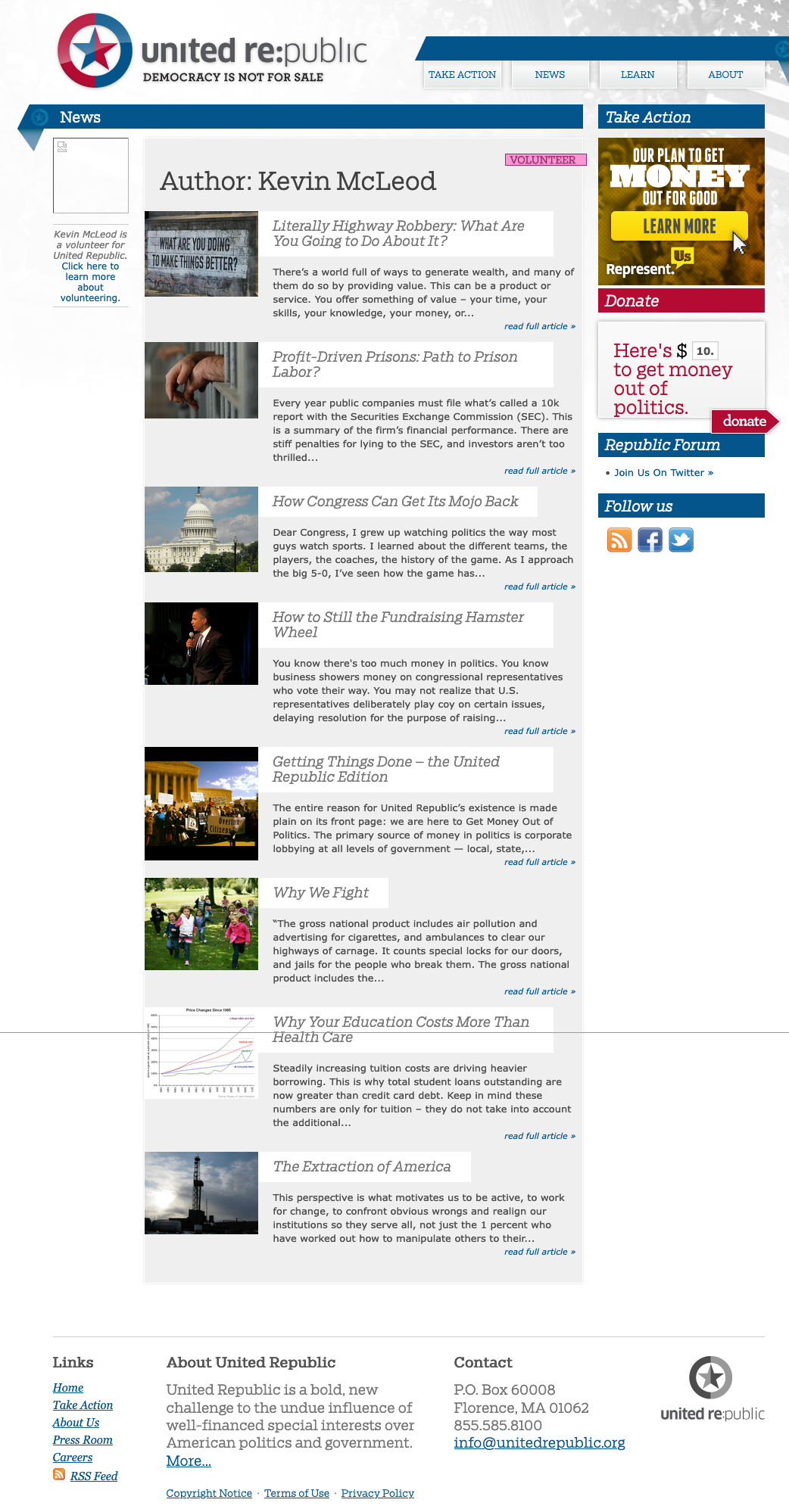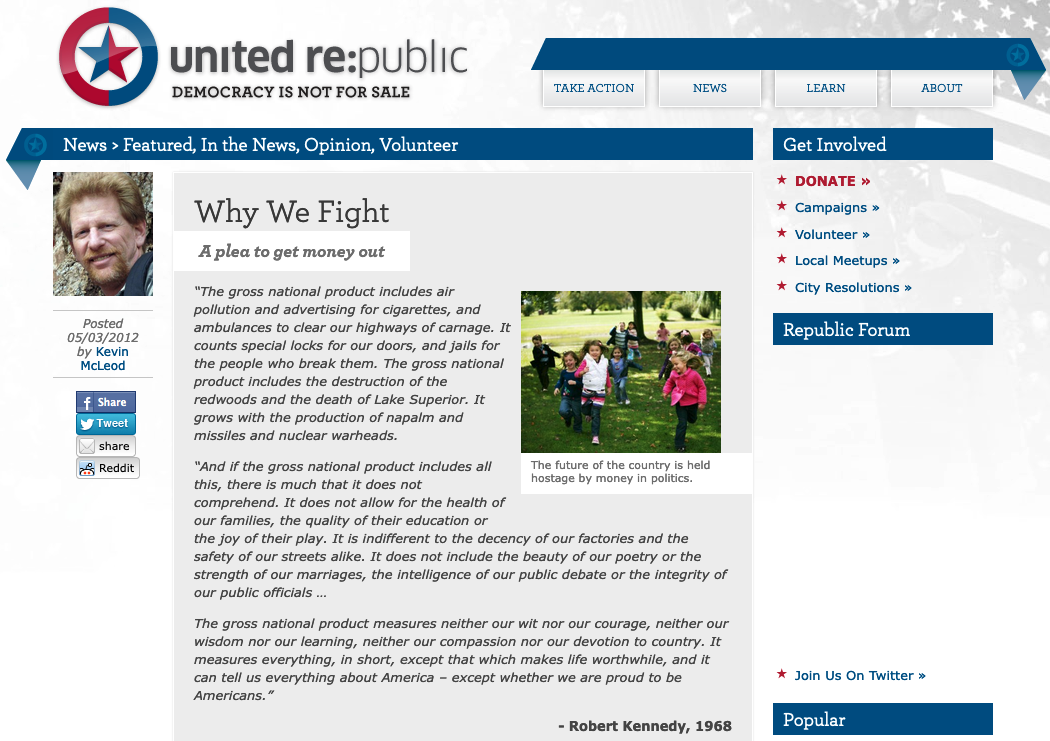Tag: sociology
-
Literally Highway Robbery: What Are You Going to Do About It?
Why getting corporate money out of politics is the only solution Published 07/02/2012 by United Republic There’s a world full of ways to generate wealth, and many of them do so by providing value. This can be a product or service. You offer something of value – your time, your skills, your knowledge, your money,… Read more
-
United Republic column

-
The Contemporary Relationship Between the U.S. and Canada

Kevin McLeod, Gov 391, 2021 In 1969, Canadian prime minister Pierre Trudeau spoke at the Washington National Press Club, where he memorably described the relative scale of relations between Canada and the U.S.: “Living next to you is in some ways like sleeping with an elephant. No matter how friendly and even-tempered is the beast,… Read more
-
The UN Tribunal for Rwanda

Kevin McLeod, GOV396, April 15, 2022 Introduction In the spring of 1994 the Rwandan government, military services and extremist groups turned violently on a cultural minority. The ensuing massacre led to ~800,000 deaths in 100 days, ending in mid-summer. Estimates vary on the exact figure of lives lost, but the fact of genocide is not… Read more
-
The Bug in Human Behavior

We still think tribally. Team sports? Mostly small bands competing with other small bands, replaying competitions for prized territory. We do mock battles for fun. Our ancestral hominids emerged as hunter-gatherers in competition with each other and other animal life. The biological imprint of that lifestyle still colors our behavior. We remained hunter-gatherers for over… Read more
-
Mapping Behavior to Environment

About 1.5 million years ago, a large group of chimps were separated by a growing Congo river. The south side of the river had more abundant food sources than the north. The chimps on the abundant side are known today as bonobos, and they’re very mellow. The women run things. They’re neighborly, sharing territory with… Read more
-
Profit-driven Prisons: Path to Prison Labor?

[One of series written for UnitedRepublic.org in 2012. Original article.] Every year public companies must file what’s called a 10k report with the Securities Exchange Commission (SEC). This is a summary of the firm’s financial performance. There are stiff penalties for lying to the SEC, and investors aren’t too thrilled with less than the truth… Read more
-
Why We Fight

[One of a series written for UnitedRepublic.org in 2012. Original article.] “The gross national product includes air pollution and advertising for cigarettes, and ambulances to clear our highways of carnage. It counts special locks for our doors, and jails for the people who break them. The gross national product includes the destruction of the redwoods… Read more
-
Cultural Differences in Moral Reasoning

Cultural differences in moral reasoning are driven by various influences — history, leadership, religious belief, experiences with peace and warfare, available resources and the strategies for extracting and distributing those resources. These cultural differences are not limited to the scale of nations. There can also be differences in the culture and moral reasoning between schools,… Read more
-
Why Parents Shouldn’t Be Able to Refuse Medical Treatment for an Ill Child
[One of 50 articles written and published for Demand Media in 2013] Legally, refusal to provide or access medical care for children can be termed medical neglect. According to the latest available national statistics, documented child abuse and neglect in 2011 affected more than 675,000 children, or nearly 1 in a 100 kids. On average,… Read more